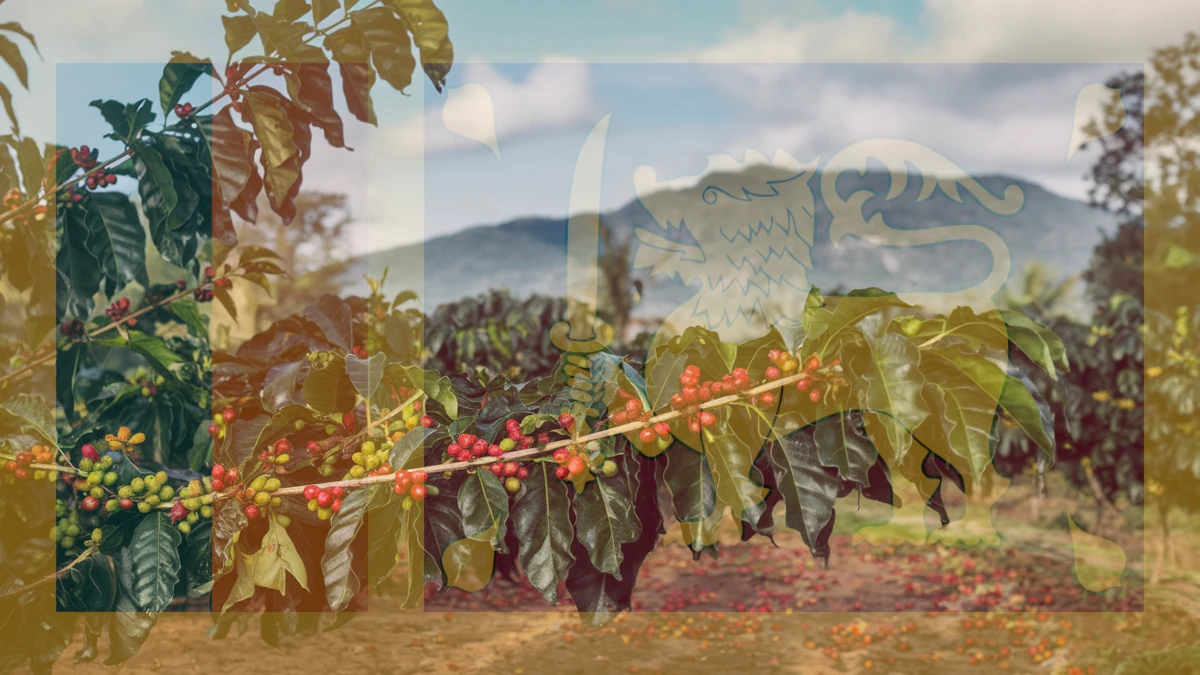Sri Lanka’s coffee industry is a fascinating blend of history, resilience, and modern revival. From its early introduction by Moorish traders to its dominance under British colonial rule and subsequent collapse, the journey of Sri Lanka coffee is rich with cultural and economic significance. Today, the island nation is experiencing a resurgence in coffee production, driven by sustainable practices and growing global interest in specialty coffee.
Table of Contents
The Origins of Coffee in Sri Lanka
Who Introduced Coffee to Sri Lanka?
Coffee was introduced to Sri Lanka in the 1500s by Arab traders, who brought wild Ethiopian coffee plants to the island. These traders played a crucial role in the global spread of coffee, particularly through their connections with Yemen and the Arabian Peninsula.
Early Uses of Coffee by the Sinhalese
Before coffee became a beverage in Sri Lanka, the Sinhalese used coffee leaves and flowers for culinary and religious purposes. The leaves were brewed into medicinal infusions, while the flowers were used in temple offerings. This early interaction with coffee plants laid the foundation for later cultivation efforts.
Dutch Attempts at Cultivation
During the 1700s, the Dutch attempted systematic coffee cultivation in Sri Lanka but faced numerous challenges. The Dutch East India Company prioritized coffee production in Java, and restrictions on trade made large-scale cultivation unfeasible. However, local farmers preserved coffee plants, ensuring the species’ survival on the island.
Colonial Roots: The Rise and Fall of Sri Lanka’s Coffee Industry
British Commercialization
Under British rule in the 19th century, Sri Lanka coffee became a global powerhouse. By the 1860s, Sri Lanka (then Ceylon) was one of the top three coffee-producing countries in the world. The British introduced large-scale plantations, invested in infrastructure, and relied heavily on Tamil laborers to expand the industry.
Environmental and Social Impact
The British cleared nearly 100,000 hectares of rainforest to make way for coffee plantations. This large-scale deforestation had significant environmental consequences, altering local ecosystems. Additionally, Tamil laborers were recruited from India to work on the plantations, marking a major shift in the island’s labor structure.
The Collapse Due to Coffee Leaf Rust
By the late 1800s, the coffee industry in Sri Lanka collapsed due to coffee leaf rust (Hemileia vastatrix). This fungal disease devastated plantations, leading plantation owners to transition to tea cultivation, which ultimately became Sri Lanka’s dominant crop.
Notable Coffee-Growing Regions in Sri Lanka
Even after the collapse of large-scale coffee farming, certain regions continued to cultivate coffee. Today, Sri Lanka’s coffee-growing regions produce high-quality arabica coffee, sought after in the specialty coffee market.
Kandy: The Birthplace of Large-Scale Coffee Farming
Kandy, the historical hub of Sri Lanka’s coffee industry, remains an important coffee-growing region. Its moderate climate and elevation make it ideal for arabica coffee cultivation.
Nuwara Eliya: High-Quality Arabica Coffee
Known for its cool climate and high elevation, Nuwara Eliya produces some of Sri Lanka’s finest arabica coffee. The region’s beans are noted for their floral and fruity flavor profiles.
Other Key Regions
- Matale: One of the first coffee-growing areas under the Dutch.
- Badulla & Uva Province: Producing coffee with bright acidity and fruity notes.
- Ratnapura & Kegalle: Historically significant, with smallholder farmers maintaining coffee cultivation.
- Dimbula: A tea-growing region that is also reviving coffee production.
The Modern Revival of Sri Lanka’s Coffee Industry
Current Production and Growth
Sri Lanka’s coffee industry is experiencing a revival, particularly among smallholder farmers. In 2019, the country produced approximately 7,688 tons of coffee across 6,445 hectares. The majority of production is managed by independent farmers who focus on sustainable and organic practices.
Focus on Arabica and Specialty Coffee
There is a growing emphasis on high-quality arabica coffee, which aligns with global specialty coffee trends. Sri Lanka’s unique terroir and heirloom varieties make its coffee attractive to specialty coffee buyers and roasters.
Economic and Cultural Shifts
Since 2014, there has been a resurgence in local coffee consumption. Specialty coffee shops in Colombo and other urban centers are increasingly sourcing locally grown beans. This shift reflects a growing appreciation for Sri Lankan coffee and supports local farmers.
Challenges and Opportunities
Despite the promising revival, challenges remain:
- Low yields and climate-related risks affect production consistency.
- Global competition from established coffee producers poses a challenge.
- Limited processing infrastructure can hinder quality improvements.
However, Sri Lanka has significant opportunities:
- The growing global demand for specialty coffee offers a lucrative market.
- Investment in sustainable farming and processing techniques can enhance quality.
- The rise of domestic coffee culture strengthens local demand and industry support.
Conclusion
Sri Lanka’s coffee industry has experienced a remarkable journey, from its early introduction by Arab traders to its colonial boom under the British and its eventual collapse due to coffee leaf rust. Today, Sri Lanka coffee is making a comeback, driven by smallholder farmers, sustainable practices, and growing global demand for specialty coffee. As the industry continues to evolve, Sri Lanka has the potential to reclaim its place on the global coffee map while preserving its rich agricultural heritage.
